"I've been training on the treadmill for more than ten years and so far everyone's been taking the mick. Now they'd sell a relative to get one!"
This is what I wrote a few days ago on Facebook, during the COVID-19 pandemic, when we were all locked at home and, following a stupid crusade against those who trained outside (without bothering anyone) and we couldn't even go out for a short run, I feel that the time has come for me to tell you how to train for marathons, ultramarathons and ultratrails on the treadmill, all while staying in Milan.
Here you can read how it all started and how my life has changed thanks to running.
Every year I run more than 1,000 kilometres and 20,000 metres of positive altitude difference on the treadmill and I have identified a series of exercises that I find increasingly useful for my training.
THE BENEFITS OF THE TREADMILL
The main benefits of this useful tool are:
1. it helps identify our 'right' pace
2. saves time
3. it allows us to simulate many situations not easily reproduced in nature
4. it trains our mental stamina
5. it allows training in any weather or environmental conditions (safety)
USEFUL TIPS
Let's look at a few general considerations before we start with the specific exercises.
The mat, on which you run, rolls under your feet whether you tread on it or not, so to avoid the dragging effect it is necessary to set a minimum incline.
Tip: 1% for road running, 2% for trail running.
It is always best to have a short 10-minute warm-up. At first, picking up speed seems difficult when compared with road running, so I recommend doing a short warm-up increasing speed, for example from 8 km/h to 12 km/h, with a 0.5 km/h increase every minute. Similarly, follow up your workout with 5 minutes of cool-down, reducing the incline and speed to walking pace. Treadmills usually have this function built in, but the default duration is always too short. Seeing the numbers and your fatigue go down will help you enjoy the results of your training.
TIP: If you want to have accurate data on the display, it is best to perform the warm-up and cool-down separately from the main workout.
Even if the room you are in is 20° C, after an hour of training, the temperature will fluctuate between 26° and 30° C in your surroundings. This will come in handy for some specific sessions. In general, if your session is longer than 40 to 60 minutes, it is necessary to have a water bottle handy. Sweating can be more than one litre per hour.
TIP: since there is no effect of your movement through space, open a window or use a fan if you can, to avoid excessive sweating.
Running on the treadmill also helps you analyse and feel your posture during the run.
TIP: you can record a short slow-motion video of yourself from the side and from behind, to observe your run from different viewpoints.
Try to use the whole treadmill and not just run in the front, by placing your feet on the treadmill frame: this will help you to run with your torso leaning slightly forward and have Mo Farah’s trademark stride.
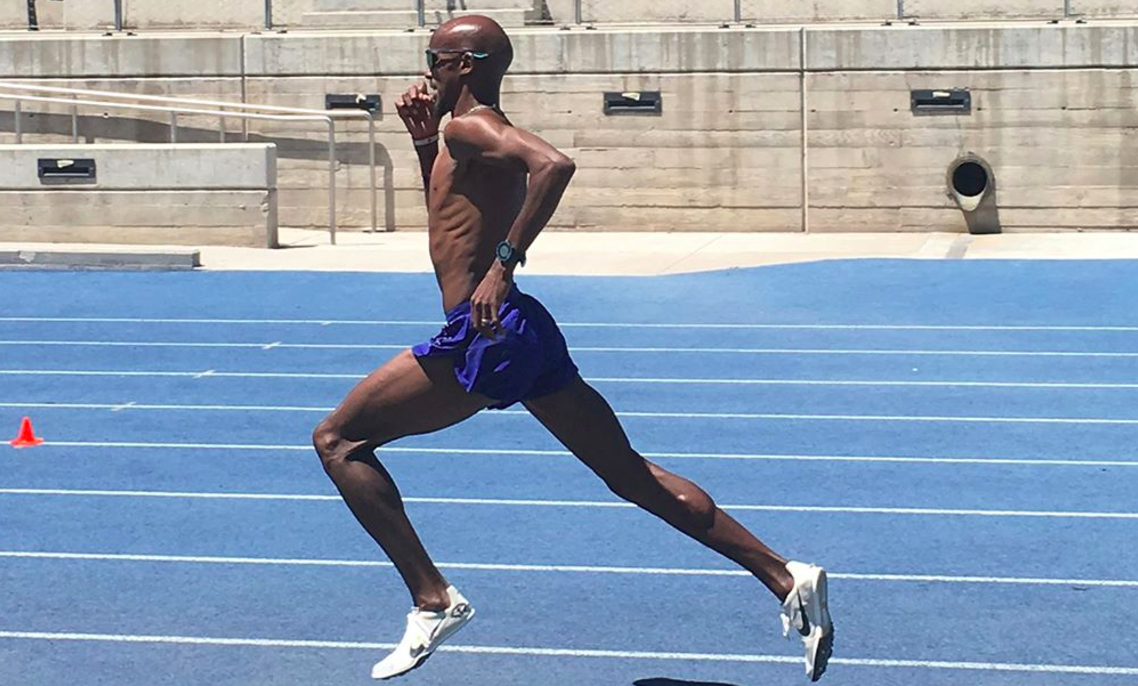
The mat and treadmill structure cushion your impact with their surface, this will put less strain your joints.
On the screen (if present) or a tablet you can watch your favourite videos. In long sessions at steady speed it helps a lot to get some distraction and this can be a great learning opportunity, online courses of all kinds can be found.
TIP: I recommend videos of about 10 minutes each, not too long. Add them to your 'watch later' list on YouTube and then use the 'play all' function, starting with the first one on the list.
HOW TO TRAIN FOR ROAD RUNNING
The biggest lesson I learnt from using the treadmill in the preparation for my half marathons (PB 1h 16') and marathons (PB 2h 44') was to be able to pinpoint exactly the pace I had to keep throughout the race.
The treadmill allows you to be very accurate in your exercises, it is totally immune to GPS fluctuations, obstacles and unforeseen events on the road and allows you to have all the data constantly before your eyes, without having to look at the watch on your wrist.
In the beginning, I found it helpful to use a heart rate monitor. On most treadmills it can also be shown on the display. With continuous training and by analysing the training data, I got to know myself better and better, until I was able to do without it. Based on the perception of effort, I was therefore also able to train the mental resistance required to not give in to the temptation to reduce speed.
As is well known, the shorter the race distance, the higher the speed. Without getting into complex reasoning about metabolic consumption of fats and sugars, try to imagine your body as a car with a tank, or rather as an e-bike with a battery. We can, schematically, represent our consumption with our heart rate or effort. The faster we go, the higher our heart rate and effort will be, and the higher our energy consumption will be.
Now, all that remains is to identify what is the maximum effort we can sustain for the time it takes to complete the set distance.
We see how the treadmill comes to our aid in preparing for the half-marathon and marathon, but the same reasoning can be applied to any distance. Certainly there are much more detailed scientific texts on how to identify the race pace, but here I want to describe a simple empirical method that is easy to apply, starting from an already acquired good aerobic base.
I don't like training tables, we already have so many tasks in our lives that I don't feel the need to add new ones. Instead, I like to experiment, see if what I have done is a workout I need and then try to improve. You can incorporate these workouts into your plan or follow my lead: do them when you feel like doing them.
TRAINING FOR THE HALF MARATHON
In the half marathon you have to give your all, you must finish with your battery at 10% but. with a smouldering engine.
The aspect to be trained for the half marathon is definitely speed, and in my opinion the best tool for doing this is short and medium intervals with recoveries at a quick pace.
The precision with which the treadmill's pace can be adjusted is very high; in fact, on the road it is practically impossible to increase or decrease your speed by 0.1 km/h. This allows experimentation, both on the length of our intervals and on the time and speed of the recovery sections, while keeping the goal of arriving at the end of the exercise with almost no battery at all.
Once the speed is set, make an effort to think that it is not possible to change it, unlike when we run on the road, where the repetitions often end up being slower and the distances are ever changing.
You can start with some classics:
10 X 500 m at approximately 95% of the maximum effort you can sustain, with recovery of 1 minute at 80%.
5 x 1000 m at approximately 90% of the maximum effort you can sustain, with recovery of 1.5 minutes at 75%.
Write down your speed and times on a sheet of paper, and for the following sessions try to increase your speed by 0.1 km/h until you reach the maximum speed for that type of exercise.
Another great exercise to do taking advantage of the accuracy of the treadmill is the 123456 pyramid:
6 km at a slow pace, approximately 70% of maximum effort
5 Km at 1Km/h faster than the previous ones
4 km at 1 km/h faster than the previous ones
3 km at 1 km/h faster than the previous ones
2 km at 1 km/h faster than the previous ones
1 km at 1 km/h faster than the previous ones
But, because I like to play it safe, one exercise I love for all distances is to try and run them at race speed. To get there, I usually do this:
10 km at race pace
15 km at race pace after 4/5 days (actually less, but stick to this)
20 km at race pace after 4/5 days (admittedly less, but you try it this way)
What is important is that you find your cruise speed based on your effort level.
TRAINING FOR THE MARATHON
Getting your cruising speed right is even more important in training for the marathon, where the goal is to finish on an empty battery. Going too fast means running out of energy before the finish line and going too slow means arriving far from our goal.
Here again, the treadmill comes to our aid with its precision and consistency.
Repetitions get longer:
10 X 1000 m at approximately 85% of the maximum effort you can sustain, with a recovery of 1 minute at 70%.
5x2000 m at approximately 80% of the maximum effort you can sustain, with recovery of 1.5 minutes at 65%.
4x3000 m at approximately 75% of the maximum effort you can sustain, with recovery of 2 minutes at 60%.
These exercises serve to convince your body and mind that you can go faster than your marathon pace and that that pace is after all (you are lying to them) a relaxing pace.
The pyramid scheme becomes 1234567 km as a progression, starting with an effort of 60%. The progressive increase in speed accurately simulates the decrease in energy reserves that you experience in the last few kilometres of a marathon.
But if you also want to play it safe:
25km at race pace
20 at race pace after 5/7 days (actually less, but follow this guideline)
35 at race pace after 5/7 days (admittedly less, but follow this guideline)
40 at race pace after 5/7 days (admittedly less, but follow this guideline)
As the distance and time required increase, the mental aspect becomes increasingly important. It is important to be able to let your body do the work while your mind is concentrating on something else. The treadmill is very useful in this instance, all we have to do is set the cruising speed and focus on a few videos featuring Eliud Kipchoge (put at least two in sequence though). Once we have assimilated the concept that we can sustain that speed, on marathon day, with the help of the adrenaline rush we get on race day, we will definitely do better.
EXERCISE SUMMARY TABLE (write to us at info@wildtee.it to get the excel file where you can record and do your simulations)
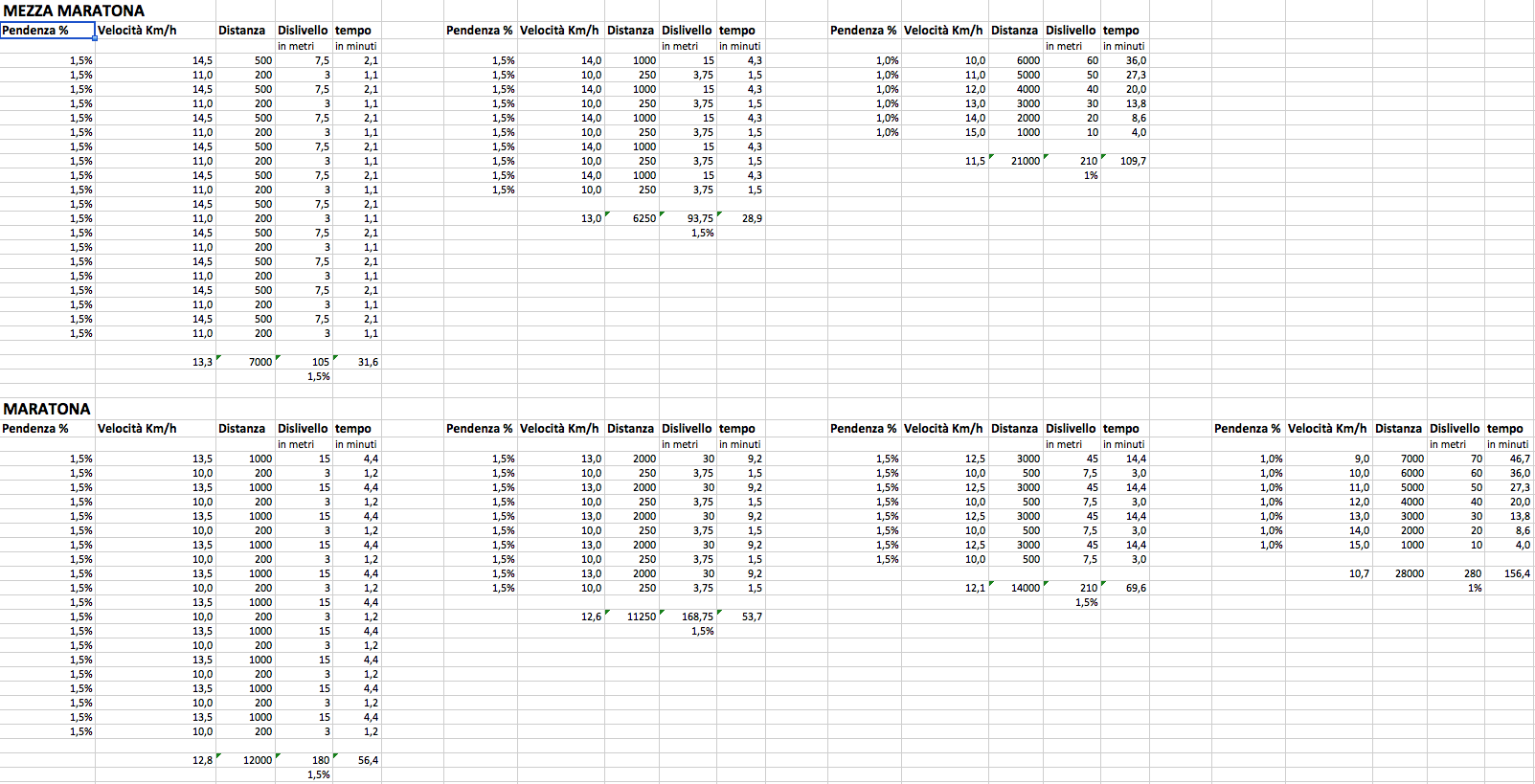
HOW TO TRAIN FOR TRAIL AND ULTRATRAIL RUNNING
Trail running is my passion, I love to suffer for hours just to reach silent and unspoilt places.
In the Wild Tee BLOG you will find the stories of our best trail running experiences and HERE are some statistics.
"But how do you run trails and ultras in the mountains, or in the desert, all while living in Milan?" is the question everyone always asks me.
Here’s the explanation.
I have prepared UTMB, Western States, Spartathlon and Marathon des Sables and many Ultra Trail races using the treadmill.
The longer the races are, the more important the consistency of your pace becomes. The secret is to be able to adapt to the route and maintain as constant an effort as possible.
Here again, the treadmill can be of great help in simulating changes in the gradient of the terrain. In this case we will try to vary gradient and speed simultaneously.
There are two workouts that have helped me cope with long Alpine climbs despite the fact that I live smack dab in the centre of the Po plains.
PROGRESSIVE ASCENT
Starting with a minimum gradient of 2% and a challenging speed (corresponding to about 90% of maximum effort)
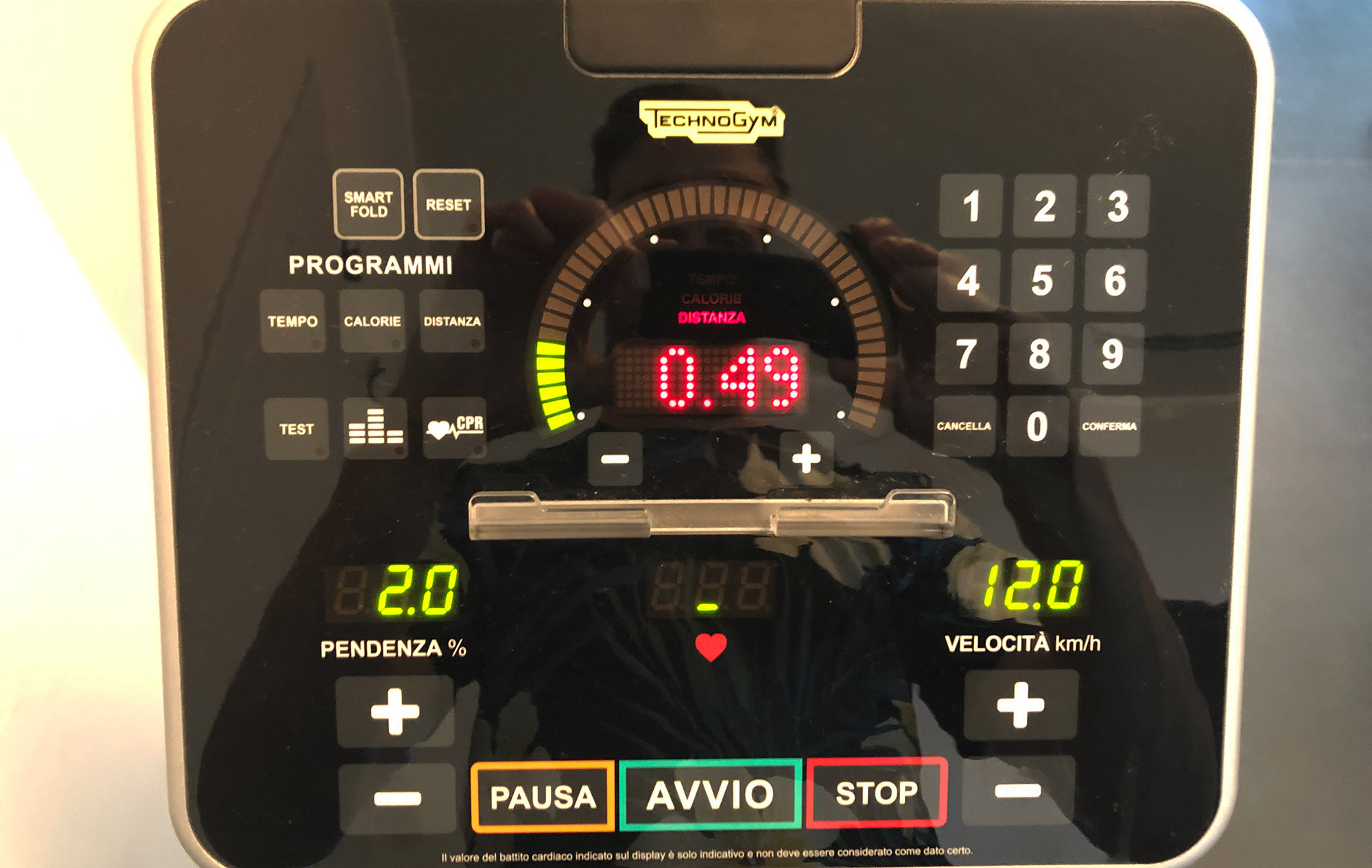
Starting with a minimum gradient of 2% and a challenging speed (corresponding to about 90% of maximum effort)
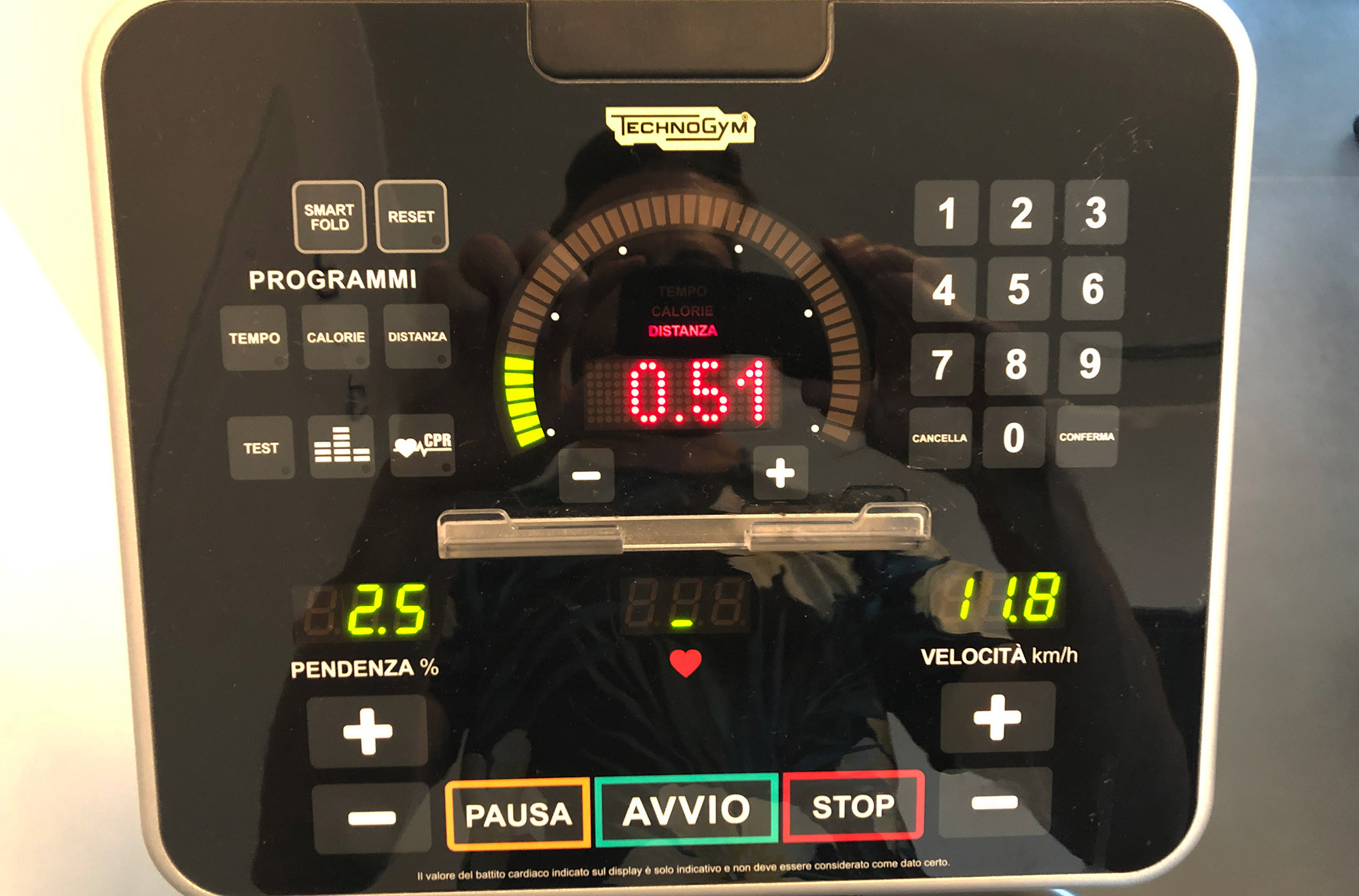
Increase the incline every 500 m by +0.5% and decrease the speed by -0.2 km/h until the maximum incline allowed by our treadmill is reached.
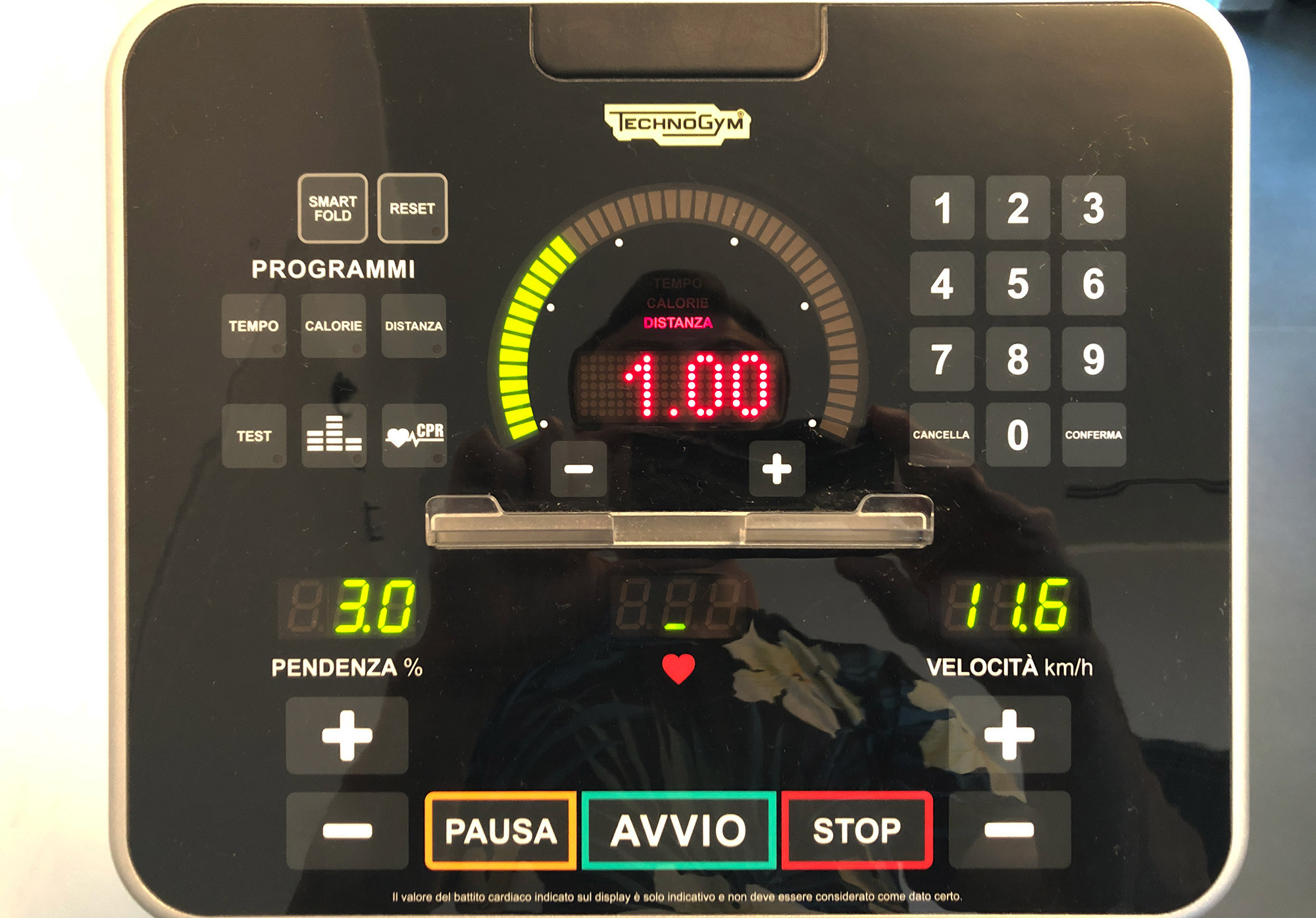
At first it will not be easy to set the correct starting speed. I base myself on the speed I can sustain at 10% incline and from there I calculate the starting speed by subtracting 16 variations of 0.2 km/h, equivalent to 3.2 km/h.
When you manage to do the whole climb you can increase the starting speed by 0.1-0.2 Km/h. Or decrease the speed by -0.1 Km/h instead of -0.2 Km/h with each variation in gradient, or change incline and speed every 1000 m.
It is a good session when in 10 km you achieve an average gradient of 7/8%, corresponding to 700/800 m of positive elevation gain (D+).
HILL TRAINING (without descent)
Starting from a minimum gradient of 2% and a challenging speed (corresponding to about 85% of maximum effort), increase the gradient by +0.5% every 250 m and decrease the speed by -0.1 Km/h, until you reach 10% or 12% gradient, then decrease the gradient by 0.5% and increase the speed by 0.1 Km/h until you return to 2% gradient. Repeat as required.
The basic concept is to decrease the speed as the slope increases, while increasing it as the slope decreases.
A possible variant involves climbing up to the maximum slope and descending back down to half of it, repeating the cycle staying in the upper half of the slope range, or carrying out the variation at a set time interval instead of a distance.
Let's say that up to 12% you should run, above 12% it is better to walk.
Training the 6/7 km/h fast walk is, extremely, important; in fact, when the gradient is high it is much less strenuous to walk. But you must be used to doing it fast.
These exercises are very useful for learning to maintain a constant level of effort as the gradient changes; in my opinion this is one of the main characteristics of an ultratrailer.
We are all familiar with those who start off at a crazy pace and then on the second climb say 'I was going well, then I bonked'. No, my friend, you started off too fast and then you couldn’t keep the pace anymore! Everyone can go strong on the first climb, it is on the last one that you see who has kept the highest constant pace.
It is a good session when in 15/20 km you achieve an average gradient of 6/7%, corresponding to 900/1400 m of positive elevation gain (D+). When you manage to complete a session with 2000 m of D+ on the treadmill, you will be ready for any climb in nature. Here again, the mental aspect is of the essence. In trail running, you need patience on the uphills because you go slower and the kilometres never seem to go by, but even the worst climb in nature will never be as challenging as a treadmill climb because a thousand details and the landscape will help your mind wander and focus on something else.
Most treadmills can reach a maximum speed of 16-18 km/h and a maximum incline of 12-15%, which are more than enough to simulate the majority of your races.
While doing a little research for this article I found a model that can go from a negative gradient of -3% to a positive gradient of +25%, but I won't tell you what it costs!
Downhills are the one thing we cannot train on the treadmill. I have tried putting books under the back of the treadmill, but the result is not at all satisfactory and the risk of injury is not worth the exercise. We save our knees, ligaments and quadriceps, and this allows us to increase the frequency of our workouts.
All these exercises can also be performed while wearing a full backpack and are very useful for testing equipment.
In preparation for the Marathon des Sables (250Km self-sufficiency stage race in the Sahara desert) I arrived (gradually) at running with a 9 kilogram backpack and realising that the one I was using uphill would seriously chafe my back. (see the MdS article).
In addition, the heat you feel after 40 minutes is very useful for racing in hot places.
And if you can do 7 workouts in a row with your rucksack on your back on the treadmill, your mental fitness level will allow you to make it to the finish line of any race.
TIP: if you want to protect the floor, put a towel on it.
EXERCISE SUMMARY TABLE (write to us at info@wildtee.it to get the excel file where you can record and do your simulations)
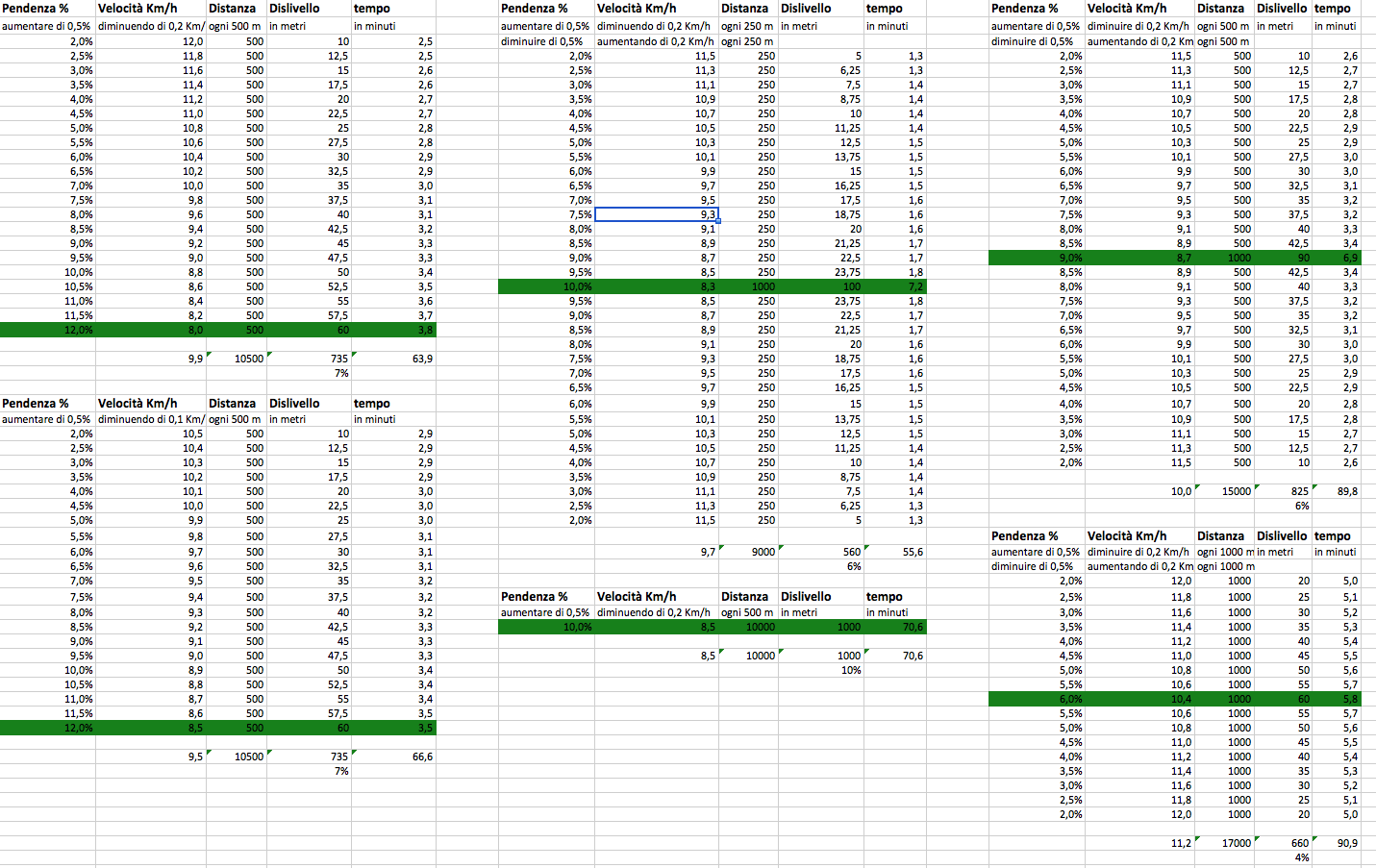
JUST FOR FUN (PER PURO DIVERTIMENTO)
If you are not preparing for any specific race, to keep fit while having fun, I recommend that you challenge yourself.
Contrary to what was I wrote earlier (or rather according to the #cazzomannaggia method, which we will talk about shortly), include the warm-up in your training session and try to compensate for the slower or less steep start by increasing the speed and/or incline while trying to reach the final average speed you wanted to achieve.
COMPATIBILITY WITH SPORTSWATCHES AND TRAINING PLATFORMS
Most sportswatches have a 'treadmill' function that uses the internal accelerometer to detect your speed even if you are standing still in the same spot. It is possible to carry out a calibration to align the data with that of the treadmill. If you want to keep track of your elevation gain, however, you have to enter it manually in Strava, because the watch is not able to calculate it. The display of your treadmill will tell you at the end of each session the distance and the average gradient, multiplying the two will give you the D+.
TIP: if you run uphill the swinging of your arms and the force with which you push them back to propel you forward will be greater than if you run on the flat, so you need to calibrate your smartwatch differently, to avoid having a higher speed than the actual one. Do a test on 4/5 kilometres measured by the treadmill and adjust the watch, which you will have started at exactly the same time, to the kilometres covered by the treadmill.
The Zwift platform recently made it possible to virtually run along a route or challenge your friends in a group run. Unfortunately, it is currently only compatible with Garmin Forerunner 245 and 945, some Footpods and some Treadmills.
Wild Tee apparel is, of course, also a must on the treadmill!



